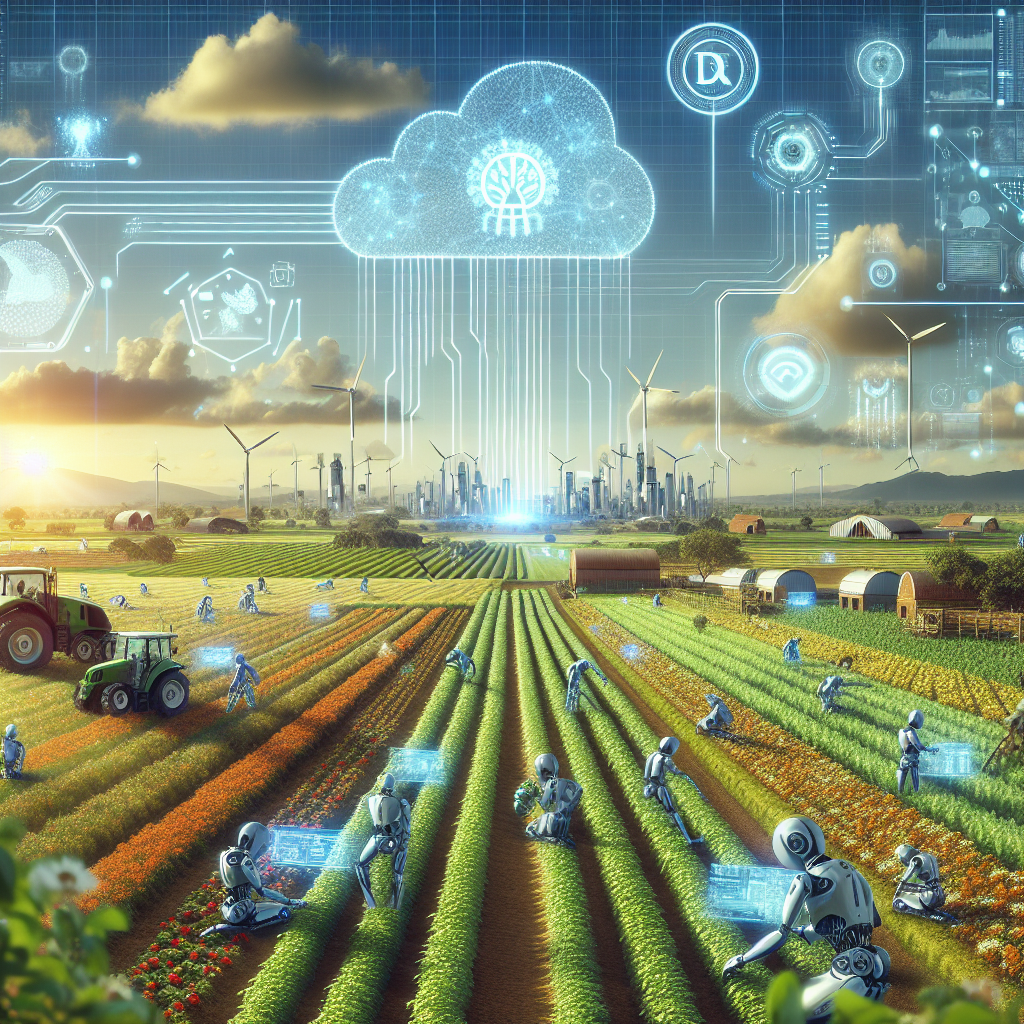AI and Robotics: The Future of Farm Labor
In recent years, the agriculture industry has seen a significant shift towards automation and the use of artificial intelligence (AI) and robotics in farm labor. This trend is driven by a variety of factors, including the need to increase efficiency, reduce labor costs, and address labor shortages in rural areas. As technology continues to advance, the role of AI and robotics in farming is only expected to grow.
One of the key areas where AI and robotics are making an impact in agriculture is in the area of precision farming. Precision farming involves the use of technology to optimize crop yields and reduce waste by applying inputs such as water, fertilizer, and pesticides in a more targeted and efficient manner. AI-powered drones and sensors can collect data on soil conditions, crop health, and weather patterns, allowing farmers to make more informed decisions about how to manage their fields.
Robotic technology is also being used to automate tasks such as planting, weeding, and harvesting. For example, robotic planters can precisely place seeds in the ground at optimal depths and spacing, while robotic weeders can identify and remove unwanted plants without the need for herbicides. Harvesting robots are being developed for a variety of crops, including fruits, vegetables, and grains, with the potential to significantly reduce labor costs and improve efficiency.
In addition to on-field operations, AI and robotics are also being used in post-harvest processing and packaging. Automated sorting systems can identify and separate produce based on size, ripeness, and quality, while robotic arms can pick and pack fruits and vegetables with speed and precision. These technologies not only help to reduce food waste but also improve the overall quality and shelf life of agricultural products.
The adoption of AI and robotics in agriculture is not without its challenges, however. One of the main concerns is the potential impact on jobs in rural communities that rely on farm labor. While automation can help to address labor shortages and increase productivity, it also has the potential to displace traditional farm workers. It will be important for policymakers and industry leaders to carefully consider the social and economic implications of these technologies and work to ensure a smooth transition for workers affected by automation.
Another challenge is the cost of implementing AI and robotics technology on farms. While the long-term benefits of increased efficiency and reduced labor costs are clear, the upfront investment required to purchase and maintain these technologies can be prohibitive for small and medium-sized farms. Additionally, there may be concerns about data privacy and security, as AI systems rely on sensitive information such as crop yields and weather patterns to make decisions.
Despite these challenges, the potential benefits of AI and robotics in agriculture are vast. By leveraging the power of technology, farmers can improve crop yields, reduce waste, and increase profitability. Automation can also help to address the growing demand for food as the global population continues to rise, ensuring a more sustainable and secure food supply for future generations.
FAQs
Q: Will AI and robotics replace human farm workers entirely?
A: While AI and robotics have the potential to automate many tasks in agriculture, it is unlikely that they will completely replace human farm workers. Instead, these technologies are more likely to augment human labor by increasing efficiency and productivity.
Q: What are the benefits of using AI and robotics in agriculture?
A: Some of the key benefits of AI and robotics in agriculture include increased efficiency, reduced labor costs, improved crop yields, and reduced waste. These technologies also have the potential to address labor shortages and help farmers make more informed decisions about how to manage their fields.
Q: How can small and medium-sized farms afford to implement AI and robotics technology?
A: The upfront cost of implementing AI and robotics technology on farms can be prohibitive for small and medium-sized farms. However, there are a variety of government grants and subsidies available to help offset these costs. Additionally, farmers can consider leasing or partnering with technology companies to access these technologies at a lower cost.
Q: What are some of the challenges of using AI and robotics in agriculture?
A: Some of the main challenges of using AI and robotics in agriculture include concerns about job displacement, the high upfront cost of implementing these technologies, and data privacy and security issues. It will be important for policymakers and industry leaders to address these challenges in order to ensure a smooth transition to a more automated farming system.

